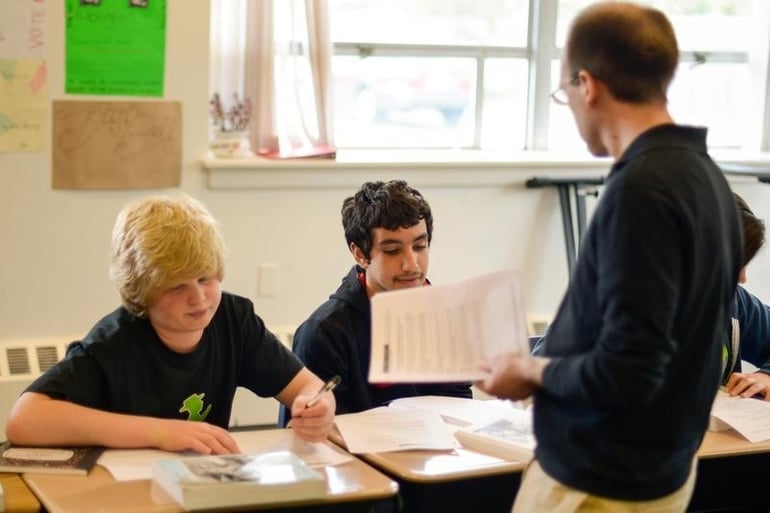This is not the blog post I wanted to write. How do you respond when lives have been lost? Paris, Chicago, San Bernardino. And what about the lives lost which don’t make national news?
Walking into the metro station earlier this week my husband and I started talking with one of the station workers. He was holding his breath as he walked upstairs with us – hoping not to find the dead body of a homeless man, as had happened the day before.
Are we, like this station worker, holding our breath to not have a dead body to deal with today?
When incidents like what occurred in San Bernardino this week happen – whether near or far – educators often have a dual response. There is the personal response: heart going out to the victims, desire for news to answer the unknowns, and asking questions to try to make sense of why. There is also the “teacher hat”: what will my students need? How do I help them process, engage, and question, without shutting down to the outside world?

In The Reporter, Nicholas Kristof shares a dilemma in reporting on mass violence and human tragedy. As a reporter, he knows that he needs some degree of clinical detachment just as a medical doctor needs to be able to respond to injuries and illness with a calm, academically-informed approach. And yet, in both of these professions, as in teaching, we need compassion as well. Each person’s loss is significant. Each life lost is something the world will not gain back.
 It is tough to feel this and stay engaged with the world, but it is essential. If we are not willing to see what is going on around us – to really see it and keep looking at it – we will not see the opportunities for change.
It is tough to feel this and stay engaged with the world, but it is essential. If we are not willing to see what is going on around us – to really see it and keep looking at it – we will not see the opportunities for change.
Facing History and Ourselves is much more situated in the preventative part of the violence cycle than the immediate response to a mass shooting. We’re in it for the long haul, planting the seeds that may help prevent future violence, but I’ve come to believe that planting these seeds is as necessary in the immediate response to violence or tragedy as in the pre-planned curriculum.
When an incident of mass violence happens, what goes on in our head? Our response can reveal our perceptions and opinions about the world, about those around us. And right then and there, is an opportunity to learn and to act. It’s a time to ask questions and act based on the responses:
- What do I need to feel safe? Why? What do my students/family need? What does my community need?
- How can we learn more? How can we learn enough to understand? Or to understand what could prevent similar violence in the future?
- How do we listen to and value each person in our world, while strengthening our common humanity?
Staying engaged is tough. Our hearts may break again and again as we see and feel loss. But the world needs us to stay engaged, no matter how hard it is to keep seeing the violence, the heartbreak, and the tragedy. And, we need to create safe spaces for our students and children to stay engaged. We need to give them the space to pause, to ask questions, share their thoughts, learn more about people and their world while not losing hope, and to see the opportunity for small steps that do make a difference.
Additional Resources:
- Develop LISTENING skills to build a sense of community
- Explore “psychic numbing” and the role of the JOURNALIST in a digital age
- Read more about how to CREATE A SAFE CLASSROOM for challenging conversations
- And read even more about creating safe classrooms AFTER VIOLENCE with this blog post written after the Paris attacks

